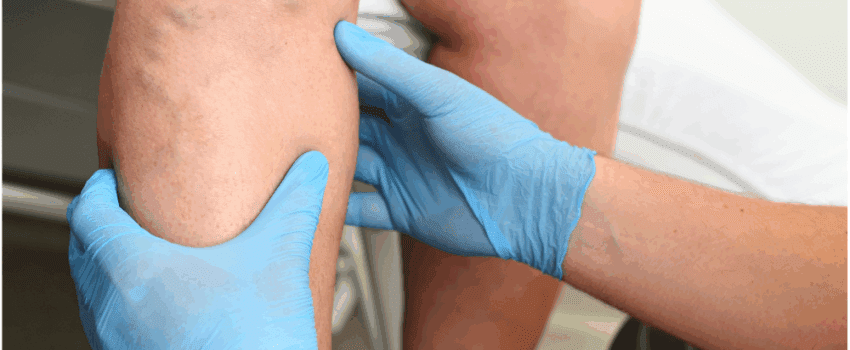For many years, vein stripping was a typical treatment for larger or painful varicose veins. It involved surgically removing the affected veins through large incisions. Then the vein was literally “stripped” from the leg with a wire-like instrument. While stripping worked at the time, it was invasive and painful and required a long recovery time.
While vein stripping still exists, of course, it has undergone a tremendous change.
What Does Vein Stripping Look Like Today?
Modern vein stripping no longer resembles the extensive surgery of the past. What patients once associated with general anesthesia, hospital stays, and significant downtime is now performed in a much less traumatic way.
This updated method, often called ambulatory micro-incisional phlebectomy, is done under local anesthesia right in the office. Instead of long incisions, providers make tiny punctures to remove problematic leg veins. The procedure is minimally invasive, rarely leaves scarring, and allows most patients to walk out the same day. Many return to work within just a few days.
So, yes, vein stripping is still an option, but it looks very different from what it did 20 years ago.
Alternatives That Often Come First
In many cases, minimally invasive endovenous procedures are preferred over vein stripping, especially when treating axial reflux (a deeper cause of varicose veins). These treatments offer strong results with even less discomfort and downtime.
They include:
Endovenous Laser Ablation (EVLA)
EVLA uses targeted laser energy to close faulty veins from the inside. A catheter is inserted into the affected vein, and the laser delivers heat that seals the vein shut. The body reroutes blood to healthier veins over time. Patients typically experience mild soreness but can resume regular activity quickly.
Endovenous Radiofrequency Ablation (RFA)
This technique works similarly to EVLA but uses radiofrequency instead of laser energy. It’s also performed through a catheter and is highly effective for larger leg veins. RFA is well-tolerated and is often covered by insurance when symptoms are present.
Both procedures are done in-office, involve little to no scarring, and have short recovery periods. Multiple studies show these techniques outperform traditional vein stripping when it comes to comfort and downtime, while achieving equal or better long-term results.
How to Find the Right Treatment for You
There’s no one-size-fits-all solution for varicose veins. While many patients benefit from laser or radiofrequency ablation, others may still need a modern form of vein stripping, especially if the veins are extremely close to the skin or if previous treatments were unsuccessful.
At North Shore Vein Center, we take the time to evaluate your unique anatomy, symptoms, and goals before recommending a solution. If vein stripping is appropriate, we offer an updated, office-based approach that’s far gentler than what you may expect. And if EVLA or RFA makes more sense, we’re fully equipped with advanced tools and techniques to deliver lasting relief.
We’re proud to serve as a trusted vein center that Long Island residents can count on. Are you ready to find out which treatment is right for you? Schedule a consultation with us today.

